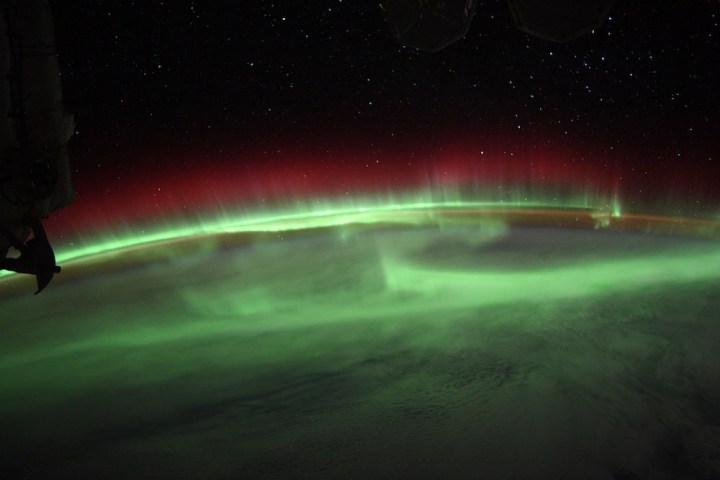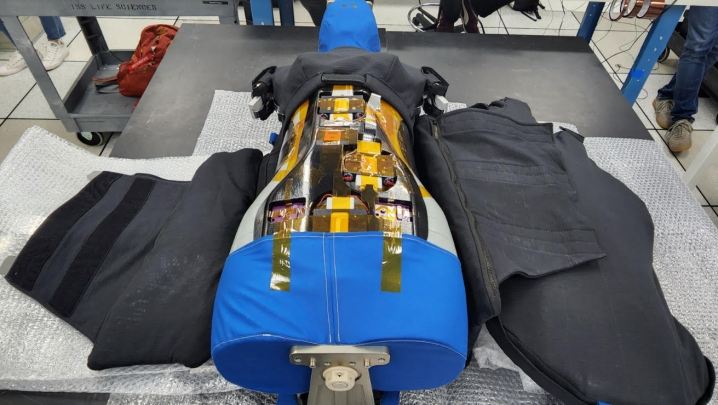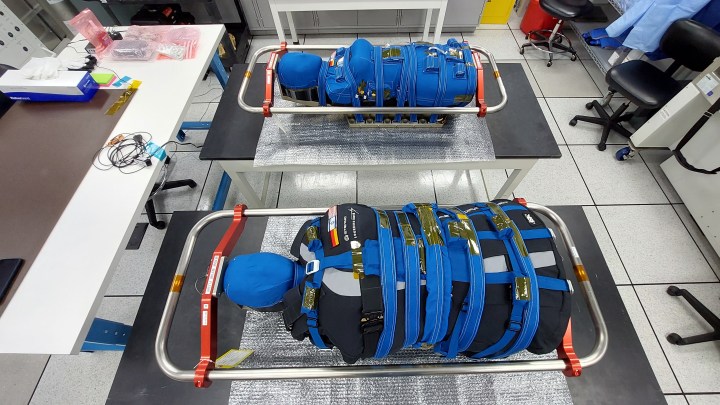
The Artemis I mission, which recently completed a historic test flight around the moon, didn’t have any astronauts on board — but it did have two very special passengers: Helga and Zohar, a pair of highly anatomically detailed dummy torsos, one of which wore a special radiation shielding vest for the journey. Their mission? Measure radiation exposure in deep space and determine whether a vest can help protect astronauts from the unseen dangers of space.
To learn more about the threat of space radiation and how to protect astronauts against it, we spoke to the CEO of the company that makes the vest, StemRad, as well as to retired NASA astronaut Scott Kelly, a veteran of space station missions who is well known for his role in research into astronaut health.
The unseen dangers of radiation
Here on Earth, we’re protected from dangerous radiation by the planet’s magnetosphere. The magnetic field around Earth traps radiation into two areas called the Van Allen belts, making it safe for us on the surface. But when astronauts go beyond low Earth orbit, as they must to visit the moon (and other potential locations in the solar system, like Mars), they are exposed to dangerous radiation.

In the long term, exposure to this radiation — which consists of charged particles from the sun called solar winds, particles ejected in coronal mass ejections, and cosmic rays — can lead to a variety of health problems. Most significantly, radiation exposure raises the likelihood that someone will develop cancer or various degenerative diseases. That’s why NASA and other space agencies have a cap on how much radiation an astronaut can be exposed to over their lifetime.
The exposure astronauts experience in an orbital environment like the International Space Station is much less than they would experience on a trip to the moon, but it’s still enough to affect the crew. “Sometimes you can see cosmic rays hitting your eyeball, and you realize that’s radiation and it’s also going through your body as well as your eyes,” said Scott Kelly, who has served multiple missions on the International Space Station (ISS). “So it’s something that you’re aware of.”
Venturing beyond the magnetosphere
With NASA’s plans to send humans back to the moon and eventually to send a crewed mission to Mars, the issue of radiation exposure is a big concern. Previous missions to the moon under the Apollo program lasted just a few days, and the astronauts were fortunate not to experience any solar particle events which raised radiation levels in the time they were away. But for missions that last for weeks or even months, we need a solution to protect astronauts from radiation.
That’s where the AstroRad vest comes in. Made from a hydrogen-rich polymer material, the vest covers the pelvis and torso, protecting the most vulnerable organs from solar radiation. It might seem surprising that radiation protection could be applied to only certain parts of the body, and StemRad CEO Oren Milstein said many of those in the space industry he pitched the idea to were surprised too. But full-body protection would be incredibly cumbersome, and the best protection would be something that astronauts could actually wear and still do their jobs.

Rather than an all-or-nothing approach, selective protection can balance effectiveness and practicality. If you can protect some of the most vulnerable organs, like lungs or breast tissue, you can help keep people safe without overly encumbering them.
Conceptualizing cumulative risks
As humans, we’re often more used to thinking about risk in terms of immediate danger than a cumulative process. Think about the difference between the fear of flying versus the way we think about long-term health dangers like smoking. And when it comes to space, it’s natural to think about dangers in terms of rockets failing or spacecraft exploding, and harder to imagine what cumulative radiation exposure looks like.
One of the key ways to reduce cumulative exposure is to make protection that is good enough to offer some protection but also, vitally, is comfortable enough that astronauts will wear it. “We want something that would not only protect you, but would be something that you would want to wear,” Kelly said. He is a member of the advisory board for StemRad and has a particular understanding of the health issues facing astronauts as he was part of NASA’s groundbreaking twin study on the effects of spaceflight flight on the human body.
A vest protects parts of the body while still allowing free movement. And it can be effective even if it’s only worn some of the time, as Milstein pointed out: “It’s not all or none in terms of duration of use. You can use the product for just 70 percent of the time and it will still be very beneficial. You can take it off to take a shower or to do strenuous activities like exercise. Because radiation is a cumulative thing.”
The importance of ergonomics
For a vest to be practical in spaceflight, astronauts need to be able to move around freely while wearing it. The AstroRad has been tested on the ISS by five astronauts who wore it day and night while going about their regular duties, to see if it impaired their movements.
“For a lot of the vital things like eating and sleeping — things that take up a lot of time — the vest was fine,” Milstein said. However, the vest did impede certain movements such as lifting their arms overhead, which made tasks like unloading a cargo vehicle more difficult.

“Unloading a cargo vehicle is challenging because everything floats,” Kelly said. “When you’re taking a bunch of items out of a bag and you open the bag and they all start floating away and you have to manage that, it becomes a challenge.” He said the challenge was mostly a mental one, as it requires astronauts to be extremely careful and methodical. But any impingement of movement will make an already hard task harder.
“Microgravity makes just about everything harder to do,” Kelly said.
To make the vest as flexible as possible without sacrificing protection, it is made of thousands of hexagons of varying depths which are fitted into a mesh. This allows certain areas to have thicker protection than others (such as more protection over the lungs) while still being flexible enough to allow movement. The vest currently comes in two sizes, for male and female bodies, but there are plans for a modular system that would allow the vest to become shorter or longer to accommodate more different-sized bodies.
Testing protection in a real-world scenario
The tests performed on the AstroRad on the ISS were to understand the comfort and fit of the vests for astronauts, but they didn’t assess the amount of radiation that was blocked. For that, the best way to test the vest’s effectiveness is to see it in a situation comparable to a real crewed mission.
That’s why the Artemis I mission, which was uncrewed, included the two dummies Helga and Zohar which are torso-shaped and filled with detectors. The two torsos are designed to detect incoming radiation particles, and one will be wearing the vest so the teams will be able to see how effective the vest is at stopping this radiation. Over the 25-day flight from the Earth around the moon and back, they will be exposed to the same radiation environment that astronauts will be in future missions.

“For the first time ever, we’re going to be able to quantify the radiation dose and the radiation penetration into the body in deep space — something that’s never been done. And at the same time, validate a potential countermeasure,” Milstein said. “It’s going to be a treasure trove of data about human susceptibility to radiation at the organ level within deep space.”
The focus of AstroRad is on protecting against ionizing radiation as this is the most dangerous for human health. But this test will also show if the vest is effective at stopping another type of radiation, called galactic cosmic rays. This background radiation is difficult to block, so the benefit will likely only be minor, but it’s all useful data for future protection measures.
The psychology of risk management
Exploring space is always going to come with a degree of risk, and astronauts are taught to compartmentalize this reality as part of their jobs. “You’re trained to focus on your job and things you can control, and ignore everything else,” Kelly explained. “You’re aware of the risk but you don’t let it incapacitate you.”
Radiation is just one of the many risks astronauts deal with. However, unlike immediate risks like launch failures, radiation is “this unknown risk,” Kelly said. “It’s a lingering risk you’re exposing yourself to for the rest of your life.”
There’s a moral obligation on space agencies to keep their astronauts as safe as they can both in terms of immediate risks and in terms of long-term health impacts. For the Artemis missions to the moon and for future crewed explorations further afield, radiation protection will be an important part of that.
For Kelly, the key to his approach to risk management is balance, which involves mitigating those risks which can be dealt with and handling those which can’t be. “We make it as safe as we possibly can within reason,” he said. “If you wanted things to be 100% safe, you’d never leave your house.”
Editors’ Recommendations


